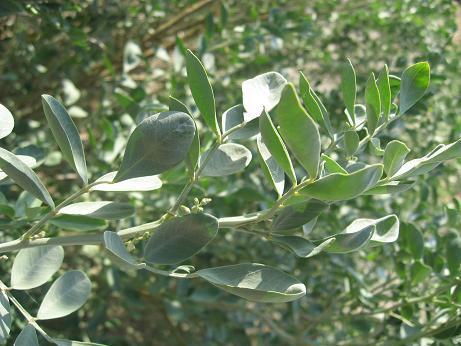This appears to be the result of an attempt to locate findings that would indicate the production of perfumes from the flora of the area in ancient times

The earliest evidence found so far, from the first century AD, of the indigo dye production industry in the Dead Sea region, is one of nearly 50 new studies that will be presented at the Ariel University Center in Samaria, as part of the "18th Judea and Samaria Research Conference", a multi-disciplinary scientific conference The fields of which are held in cooperation with the R&D of the Samaria and Jordan Valley regions. The conference will take place tomorrow, Thursday.
In new tests conducted by Dr. David Iloz and Dr. Zohar Amar from the Department of Land of Israel Studies and Archeology at Bar-Ilan University, evidence of indigo dye was found in samples of ash from a workshop in Ein Bokk. The researchers' assumption is that the source of the color is the indigo plant (Indigofera sp.), probably silver indigo (Indigofera articulate), which still grows in this area as a cultural refugee (now a wild plant). This finding reinforces the possibility that Godel was born in the Land of Israel even before the Arab conquest (6th century), since until now there were many and clear evidences of this only from the early Arab period, as found in Tzoer, Jericho and Beit Shan.
The finding of the dye of the indigo plant in the ashes of ancient industrial waste in Ein Bokk, probably from the first century AD, is in fact the earliest clear evidence so far of the use of this marker in the Dead Sea region. The crushing facilities, the soaking facilities and the ovens can be linked with the process of extracting the color from the leaves of the plants grown in the area. The researchers actually wanted to find findings for a perfume industry that operated there, but at the moment there is no sufficient basis for this. The hypothesis is that the residents of the place took advantage of the local natural treasures and the unique climatic conditions, and engaged in the cultivation of persimmon bushes and other perfume plants, as well as the cultivation of dates and the production of honey or wine from them, the collection of bitumen, the production of cleaning materials, and the production of indigo dye. Evidence for all these products (except the persimmon) was found in Ein Bokk.

2 תגובות
Peace
I am an artist
And for painting/dyeing/printing I am looking for an available indigo color to use.
Do you have a recommendation where to purchase?
Thanks
Dafna Dor
David Iloz, a dogged researcher.
All the best for the bargain and my feeling is that you will still find us the famous persimmon. From our last conversation I learned that there are several suspects in your interrogation cell and some have already confessed (problem!) to their perfidy.
Best of luck and may we have many more publications soon in our days from the blessed hands of Dr. Iloz.
Ami Bachar